|
Old photographs and adverts are interesting in many
ways. They can re-kindle half-forgotten memories, re-capture
some of the important events in our lives, and help us to
discover the past.
In the 1960s, Wolverhampton changed in
many ways, changes that were far greater than in previous
decades. One obvious change took place in retailing,
beginning with the building of the new market hall, followed
by the redevelopment of the town centre. |
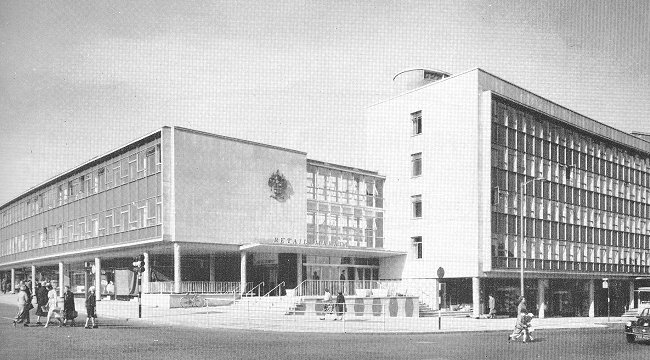
The new market. From the 1965 Wolverhampton
handbook.
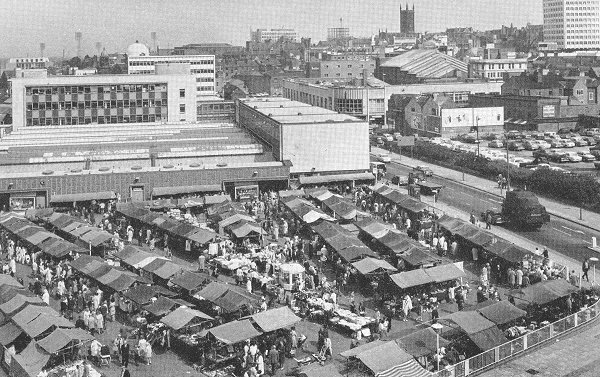
The new outdoor and indoor markets. From the
1970 Wolverhampton handbook.
|
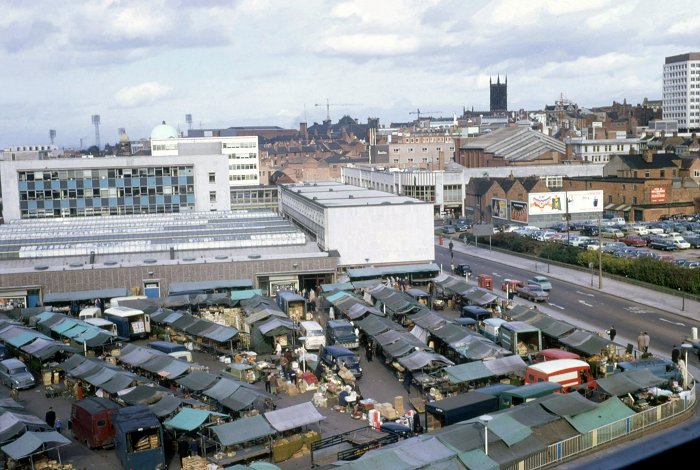
The excellent outdoor market in
1967. |
|
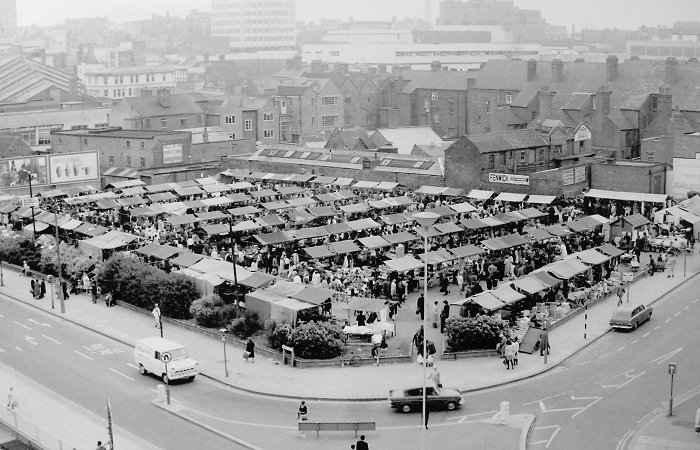
For a short time in the late
1960s, the outdoor market was on the corner of School
Street and Pitt Street. |
| The excellent Woolpack Restaurant
that was in the new market building.
Every weekday lunchtime and on
Saturdays, there was a good menu with plenty to choose from,
all at a good price. It served the local community very
well. Functions were also held there, as well as live
entertainment.
From a 1968 advert. |
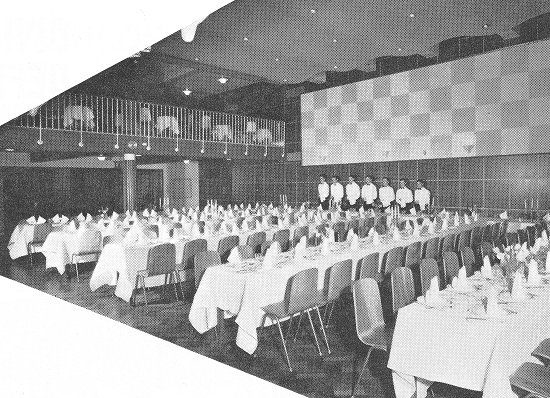 |
|
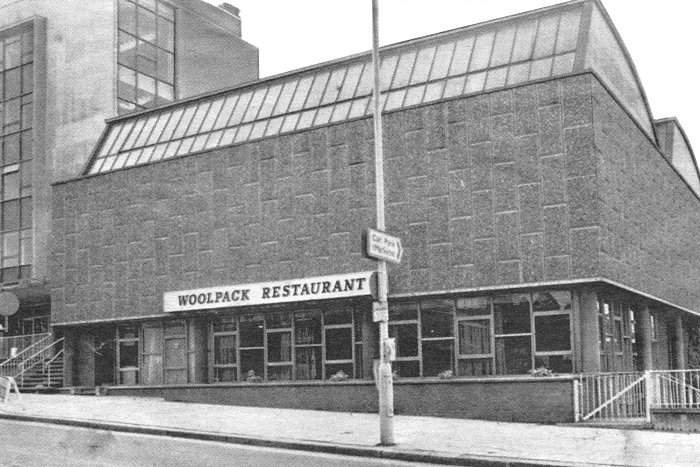
A view of the Woolpack Restaurant,
as seen from Salop Street. From an old newspaper
cutting. |
|
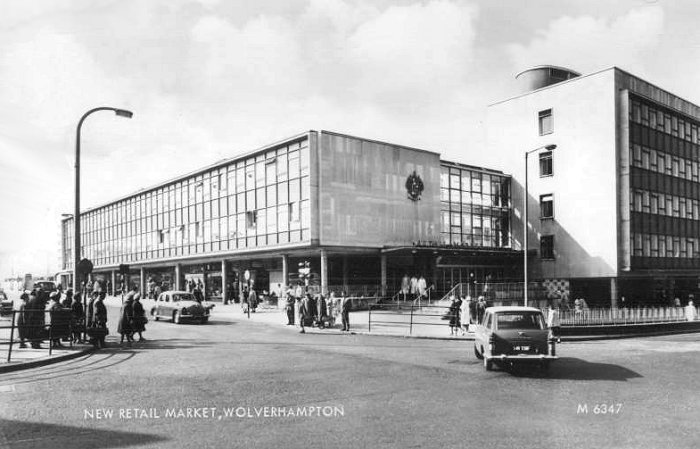
From an old postcard. |
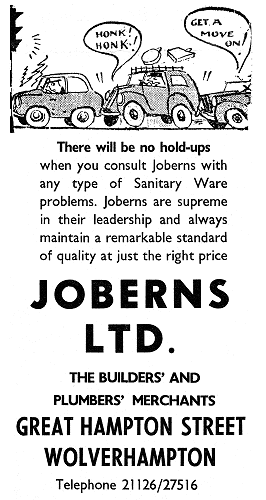 |
In May 1960 the old market in Market Square closed for
the last time, and moved to the new indoor and outdoor
markets alongside School Street and Salop Street, which were
officially opened on 22nd June by Lord Morrison of Lambeth.
Throughout the decade, shopping in the town centre
greatly changed, beginning with the building of the large C
& A store in Dudley Street, followed by a major upheaval in
the form of the building of the Mander Centre, and the
Wulfrun Centre.
The project involved the demolition of many buildings
that had become familiar landmarks, and were sadly missed.
The Mander Centre was officially opened by the Mayor,
Alderman Edward Fullwood on 6th March, 1968. Two years
earlier, the foundation stone had been laid for the Wulfrun
Centre, which was completed at the end of the decade. |

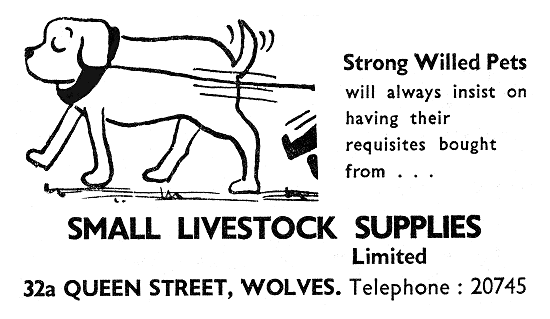
|
In March 1961 the first section of the
Ring Road from Dudley Road to the Penn Road Island opened.
The building of the remaining six sections of the road would
take another twenty five years, and greatly alter the local
landscape.
There were changes to the railway with
the demolition of the old High Level Station in 1965 and the
building of its replacement, which still stands today. The
changes were made as part of the scheme to improve and
electrify the West Coast Main Line. The new station was
completed in time for the first electrified services, which
began on 6th March 1967. At the same time the main train
services from the Low Level Station were transferred to the
new High Level Station.
While this was happening,
Wolverhampton's trolley buses were being phased-out. The
last trolleybus, number 446 made its final journey from
Wolverhampton to Dudley and back on 5th March, 1968. |
 |
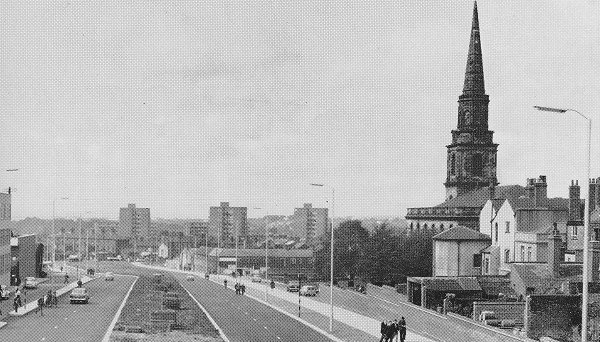
The first section of the Ring Road to be
completed. From the 1965 Wolverhampton handbook.
 |
Section two of the Ring Road.
From the 1968 Wolverhampton
handbook. |

Looking along the ring road towards Chapel
Ash. From the 1970 Wolverhampton handbook.
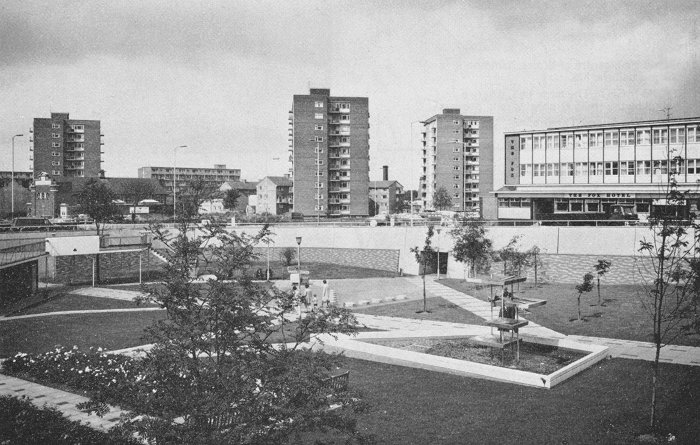
The island at the end of Penn Road. From
the 1970 Wolverhampton handbook.
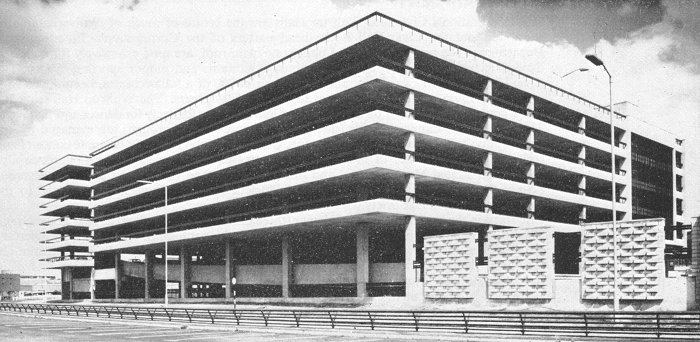
The multi-storey car park in School
Street. From the 1970 Wolverhampton handbook.
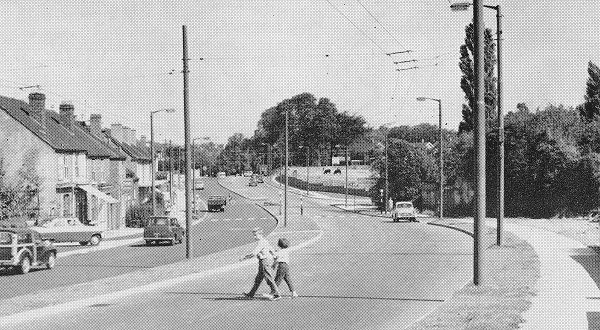
The dual carriageway at Penn, built in 1964.
From the 1965 Wolverhampton handbook.
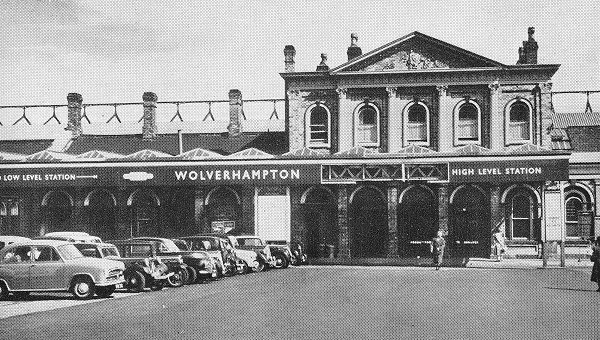
The old High Level Station. From the 1965
Wolverhampton handbook.
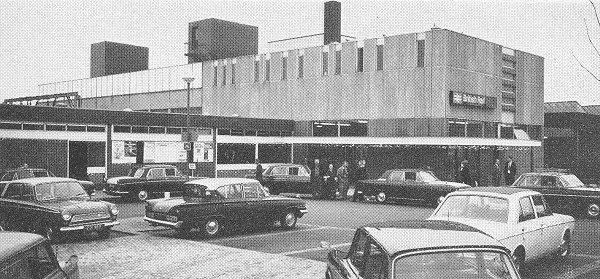
The new High Level Station. From the 1970
Wolverhampton handbook.
| A view of platform
3 in the new High Level station.
From the 1970 Wolverhampton
handbook.
|
 |
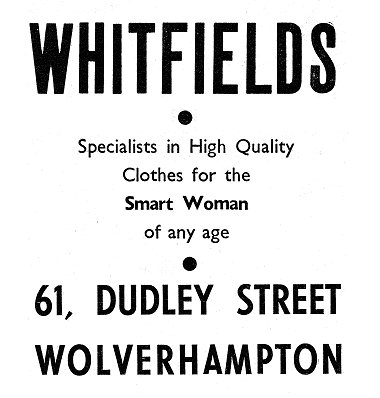 |
There were several changes in the education sector. In
1962 Highfields, built in 1958, took over Bingley Secondary
School.
On 20th April, 1963 the Technical High School at
Fordhouses was officially opened by Christopher Chataway,
M.P., and in September 1969 the College of Technology
officially became Wolverhampton Polytechnic.
In 1960 the local authority founded 'The Towers' outdoor
pursuits centre in Capel Curig, which officially opened in
April 1961.
The Teachers' College in Walsall Street was inaugurated
in September 1961, and theTechnical Teachers' College in
Compton Road opened in 1964.
|
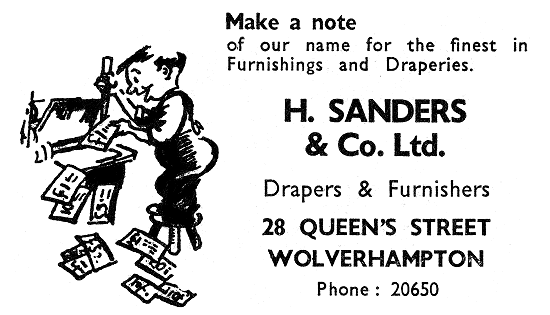
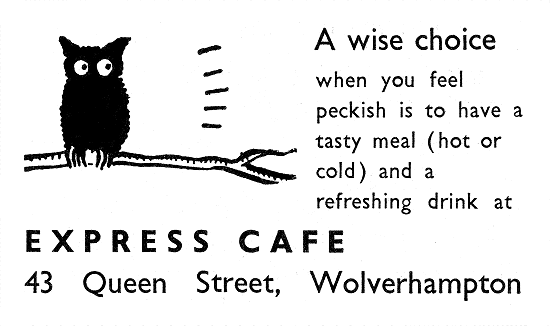
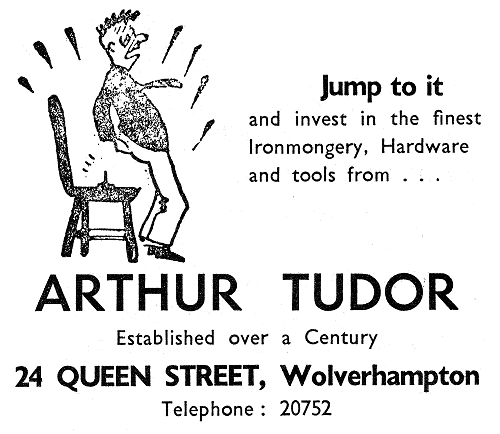 |
The 1960s, known as the swinging sixties, saw an influx
of famous pop stars, who performed at the Gaumont on Snow
Hill, including Gene Vincent who appeared there in 1960, The
Beatles who were there in 1963, and Roy Orbison, who made appearances on 16th March, 1965, 18th March,
1967.
The great interest in pop music even reached the Royal
School where a ‘pop’ room opened in July 1967 as an amenity
for the pupils. |
| Bingo became a popular pastime in the 1960s, and many
cinemas turned into bingo halls. One such cinema, a
once-important venue, the Clifton Cinema, closed on 19th
February, 1966, before reopening as a bingo hall. |
| Tweedies were the town's premier
supplier of all kinds of sporting equipment and clothing.
They also catered for outdoor pursuits, with walking gear,
boots, and camping equipment.
The shop later moved to Bell Street,
and was there for many years. |
 |
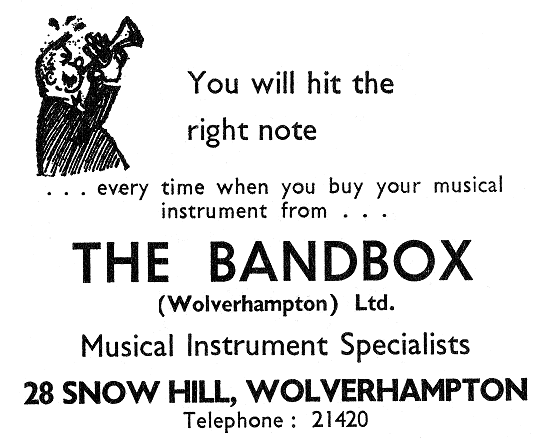 |
The Bandbox was the place to go for any 1960s teenager
who wanted to buy a guitar or a drum set, both of which were
extremely popular at the time.
The shop sold a wide range
of musical instruments and accessories. |
| By 1968 there were over 37,000 council houses and flats
in the borough, but due to the still growing population,
more were needed. In the 1960s the answer seemed to lie in
the multi-story tower blocks which were rapidly appearing
around the town. Several large developments
were completed during the decade including the Vauxhalls
Estate with three eleven storey blocks of flats, and the Blakenhall Gardens Flats,
with six high-rise blocks: Cobden House, Cross House, Neale
House, Ranelagh House, Villiers House, and Phoenix Rise. The
new development consisted of 607 homes, and was officially
opened by Sir Keith Joseph on 19th December, 1967. All
traces of them have now disappeared. They were demolished
between 2002 and 2010.
Another large development, at Heath Town, consisted of blocks between 4 and 22 storeys
high, and was officially opened by Princess Margaret
on 1st April, 1969. |
 |
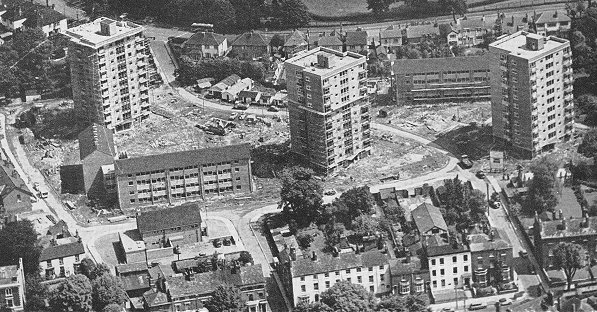
The Vauxhalls Estate nearing completion. From
the 1970 Wolverhampton handbook.
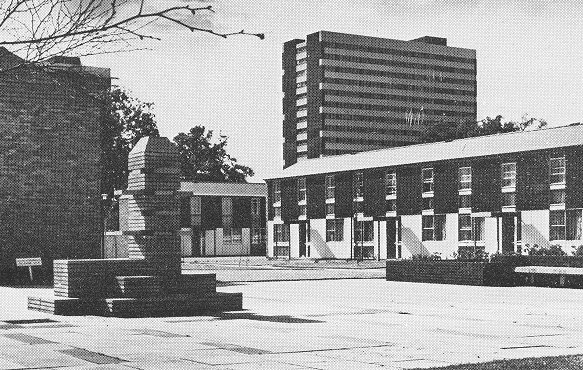
The Leasowes council estate which
won a Design Award from the Ministry of Housing and
Local Government. From the 1970 Wolverhampton handbook. |
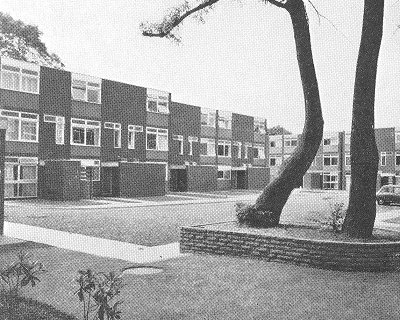 |
Another development, Bantock
Gardens received a Civic Trust Commendation in 1966.
From the 1968 Wolverhampton handbook. |
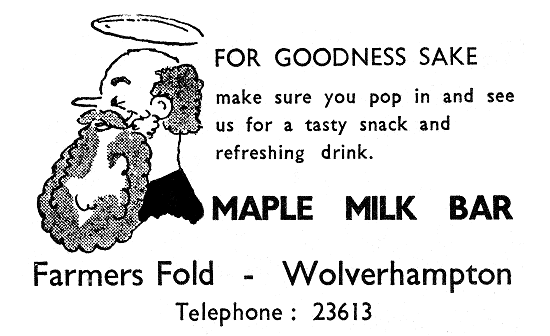
|
In the 1960s there were many small radio and TV dealers,
selling, renting, and repairing TVs, all employing TV
engineers, a common occupation at the time. Today TVs are
extremely reliable, but in the 1960s they frequently needed
repair.
Smith's Radio Service occupied the shop on the corner of
Worcester Street and Temple Street, and mainly sold
re-conditioned televisions, ex-rental TVs from Cliff &
Halifax who had a large number of shops in the West Midlands
including one on Snow Hill.
Mr. Smith's son ran a Hi-Fi and camera shop, initially in
Worcester Street, and later in Victoria Street.
The business survived until 1975 when it went into
voluntary liquidation, as can be seen from the notice below. |
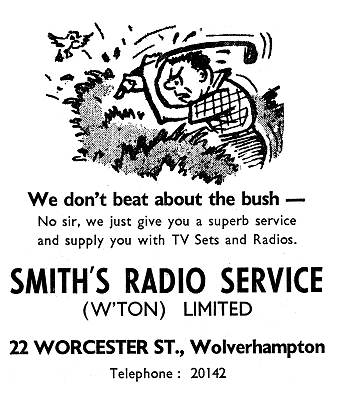 |
 |
Local TV rental companies included DER in Worcester
Street, and the Mander Centre, Radio Rentals in Skinner
Street, Granada in the Wulfrun Centre, and the original
cable TV company, Rediffusion, based at 21 Cleveland Street. |
| Some companies, such as Collis, rented pay as you view
televisions which had a coin-operated box on the back. The
box would be emptied monthly when a representative from the
company would call. Other TV rental companies included
Multi Broadcast, Telefusion, Derwent Television, and Good
Listening.
Colour televisions appeared in 1967 and were initially
very expensive, so for many people, renting was the only
option. |
 |
|
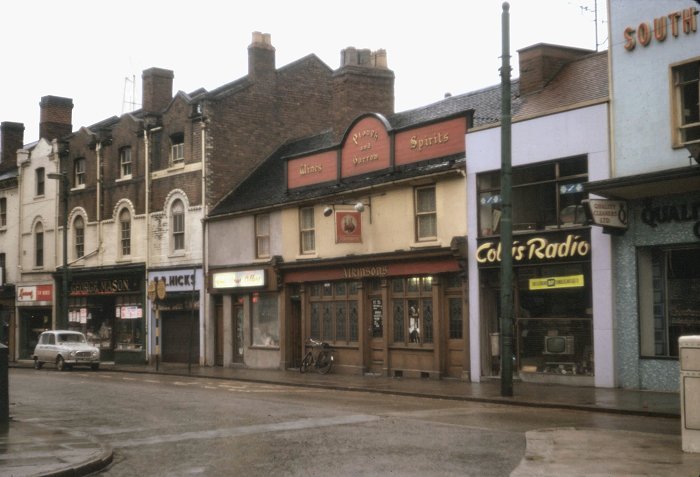
Collis Radio's shop at 18
Worcester Street in 1966. |
| Collis were locally based
with a head office in Cleveland Street,
which moved to St. John's House, St. John's
Square, in the middle of 1969. The firm
specialised in the sale and rental of
Philips televisions, along with televisions
fitted with a slot meter. |
 |
Collis Radio had many outlets, including branches in
Dudley, Wednesfield, Walsall, Lichfield, Birmingham,
Redditch and Stoke-on-Trent. |
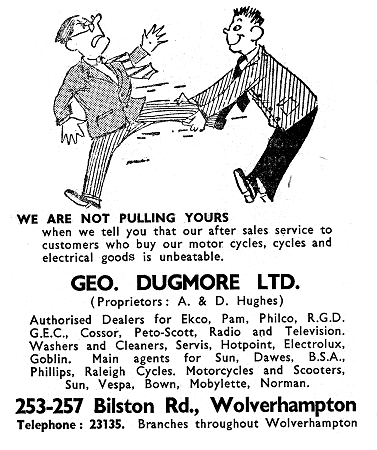 |
Although George Dugmore Limited in Bilston Road is
remembered for its cycles, motorcycles, and scooters, the
company also sold televisions, as can be seen from the
advert opposite. Colour televisions were manufactured
locally by Decca, based in a large factory, in Strawberry
Lane, off Neachells Lane.
Some of the TV rental shops were owned by manufacturers.
Domestic Electrical Rentals (DER) based in the old Scala
Cinema building in Worcester Street, and a shop in the
Mander Centre, belonged to Thorn, makers of Ferguson
televisions.
Radio Rentals in Skinner Street rented GEC and Baird
televisions, but was taken-over by Thorn in 1968. |
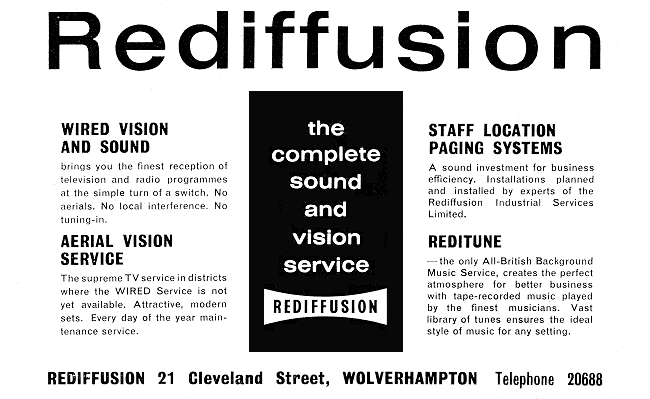
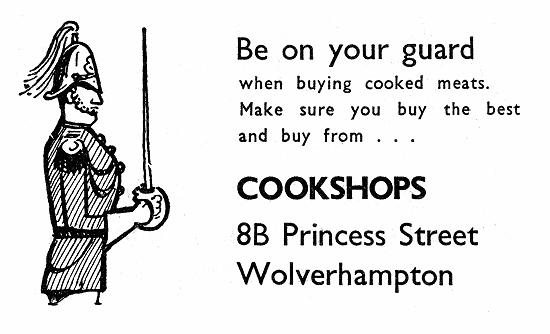

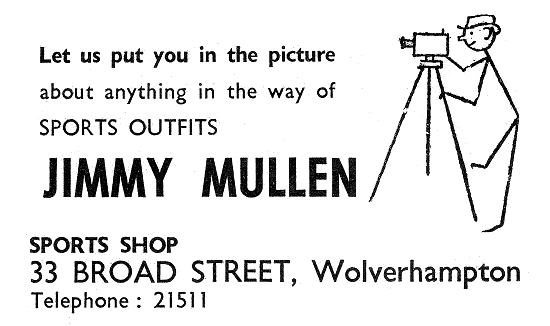

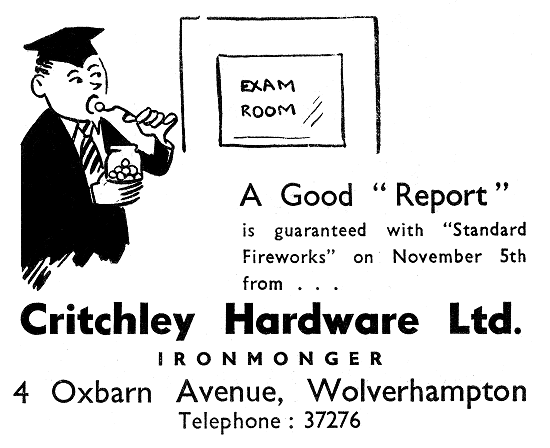 |
Critchleys is one of our few remaining traditional
ironmongers, selling almost every kind of domestic hardware.
It is greatly appreciated by much of
the local population. |
| In the 1960s there were many gents' hairdressers in the
town.
The 1964 Kelly's Directory of Wolverhampton lists 59 of
them, not including the one opposite. |
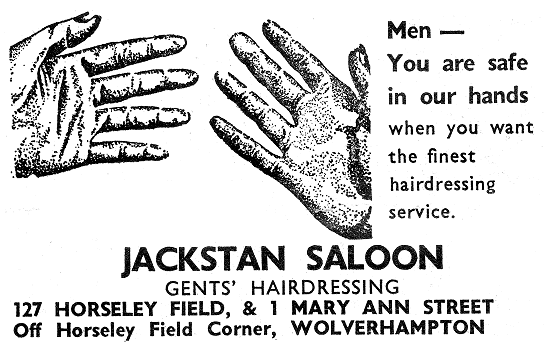 |
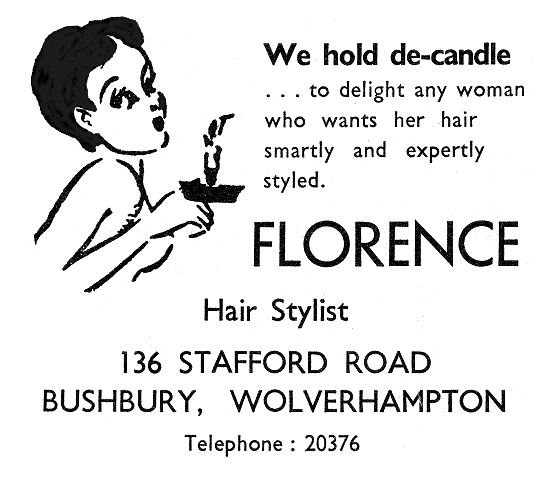 |
Ladies' hairdressers were even more common.
The 1964 Kelly's Directory of Wolverhampton lists 106 of
them. |
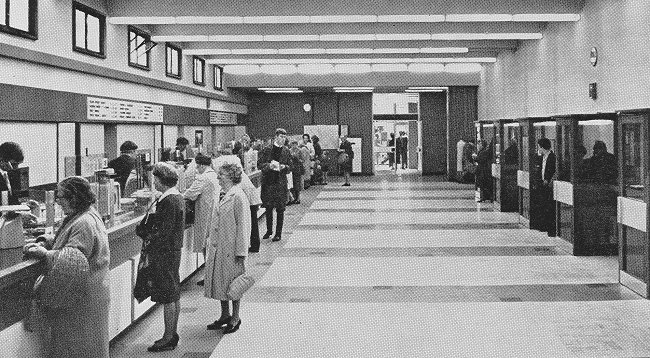
The new post office in Lichfield
Street which has sadly closed, opened on 5th
December, 1965. From the 1968 Wolverhampton handbook. |
| In the 1960s Wolverhampton still had an airport. The
airport, which opened in 1938 was mainly used by Don Everall
(Aviation) Limited to run passenger services to destinations
in the UK and Ireland, the Channel Islands, and parts of
Europe. The company also managed the Wolverhampton Aero
Club which provided training services and flying facilities
for local inhabitants and members of the Air Training Corps
who had been awarded Air Ministry Scholarships. |

Wolverhampton Municipal Airport. From
the 1968 Wolverhampton handbook. |
| There were repair and maintenance facilities on the
site, and a lounge bar and dining room in the terminal
building. The airport was also used for some executive and
private air travel. In 1966 as a result of the Local
Government Reform Act, Wolverhampton increased in size,
absorbing Tettenhall, Wednesfield, Bilston, parts of
Willenhall including Portobello, and parts of Coseley and
Sedgley.
The 1960s were certainly an interesting decade. |
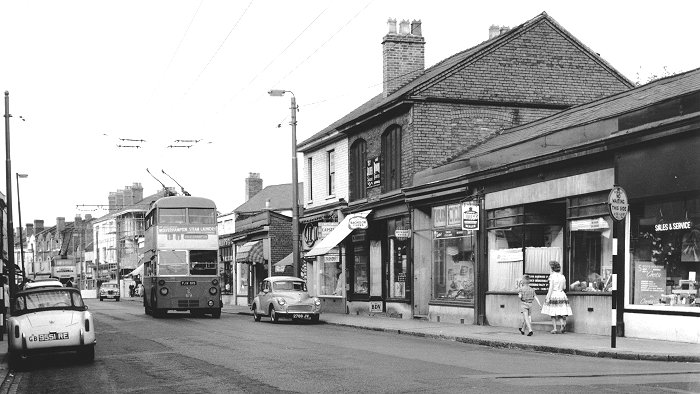
Worcester Street and the old shops which would
soon disappear.
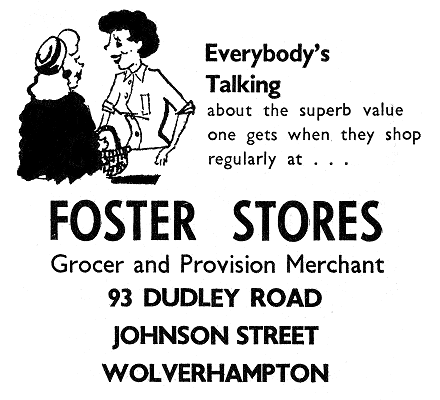
 |
Return to
the
previous page |
|